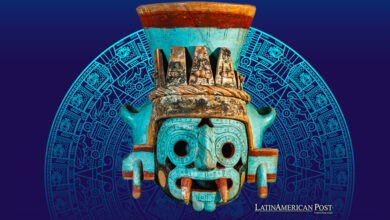It’s time to eradicate coca
Listen this article
The increase in the production and consumption of coca in the world in the past years reflects the great need to control the coca business around the world

The meeting between the Secretary of State of the United States, Mike Pompeo, and the Colombian president, Iván Duque; left something more than funny memes. During the meeting held in Cartagena, Pompeo expressed his "deep concern" about the high figures of coca leaf production in the country. Despite the efforts of the coffee country to reduce the cultivation of coca plantations and the production of drugs, it seems that the determination to eradicate it is not enough.
Leer en español: Es momento de erradicar la coca
A study revealed by the Integrated System of Illicit Crops of the United Nations Office on Drugs and Crime (UNODC), affirms that in 2017, there was reached a historical figure of 171,000 hectares cultivated with coca. Being the departments with more production Antioquia, Cauca, Norte de Santander, and Putumayo.
With this in mind, the representatives of each reached an agreement to reduce coca production by 50% by the year 2023. A task that will not be easy for either of the two countries because the United States is the most consumer country in the world. coca, and Colombia the largest producer country.
Maybe you're interested in reading: It is not coca what is consumed, it's cement and gasoline
The challenges
Thanks to the large amount of land destined for coca plantations, the traffickers of this drug not only supply the traditional American or European market but also begin to see powerful buyers such as the African or Asian case.
The fact that it has gone from exporting 772 tons to 921 tons, as indicated in a report by the Office of National Drug Control Policy (ONDCP, for its acronym in English), makes it clear that the task will not be easy, because the drug traffickers will not let go of the easy business and less when, in June 2018, the consumption of cocaine displaced, for the first time, the consumption of alcohol, according to the data presented by the Observatorio de Proyecto Hombre.
In addition to the above and according to the Economic Commission for Latin America and the Caribbean (CEPAL) the economic income of drug trafficking grew 150% in 2017. It is added that drug trafficking produced at least 15,000 million dollars, even above the coffee sector.
To try to counteract the increase in plantations, the Duque government at the end of last year, manifested a new fight against drugs, where he emphasized that the Anti-Narcotics Police would have to play a fundamental role to "break the chain of economic income, seek to be effective with the eradication and substitution and also precision where required with the spray platform in accordance with the provisions of the Constitutional Court ".
He also stressed that during his government he does not want the country to be flooded with coca. "We want alternative development, substitution, and eradication where there are illicit crops. We do not want a country flooded with coca, because it deteriorates the environment, creates corruption and generates poverty. We have to work hard on comprehensive policy, "the president added.
However, Duque's efforts to try to reduce illicit plantations will have to have an immediate-term solution for the populations that still see coca as a secure income, which is guaranteed by drug traffickers, and in those who protect themselves against it.
On the other hand, the commitment of the United States will have to be stronger than ever. Despite having found new routes for the trafficking of this drug, the United States remains the preferred destination for most of the cocaine. As revealed by the DEA, the seizures in 2017 reached a maximum of 34 kilograms and 93% of the product was of Colombian origin.
As Insight Crime mentions, the cocaine boom has led to an increase in the consumption of drugs in the United States. Similarly, stresses that almost 15,000 people died from a cocaine overdose in 2017.
If a strategic plan is made with Colombia, several Latin American countries would supply (to a lesser extent) the demand for cocaine. One of these countries is Mexico, which has seen a boom in drug trafficking, which trades narcotics beyond cocaine, such as heroin, and that increasingly is designed strategies for drug trafficking does not stop.
Thus, the fact that Colombia is the largest producer of cocaine in the world is directly tied to the lack of critical sanctions by the United States, who will be forced to reinforce measures with the transit of narcotics. Well, it is not only Colombia that is your main concern.
LatinAmerican Post | Laura Viviana Guevara Muñoz
Translated from "Es momento de erradicar la coca"





